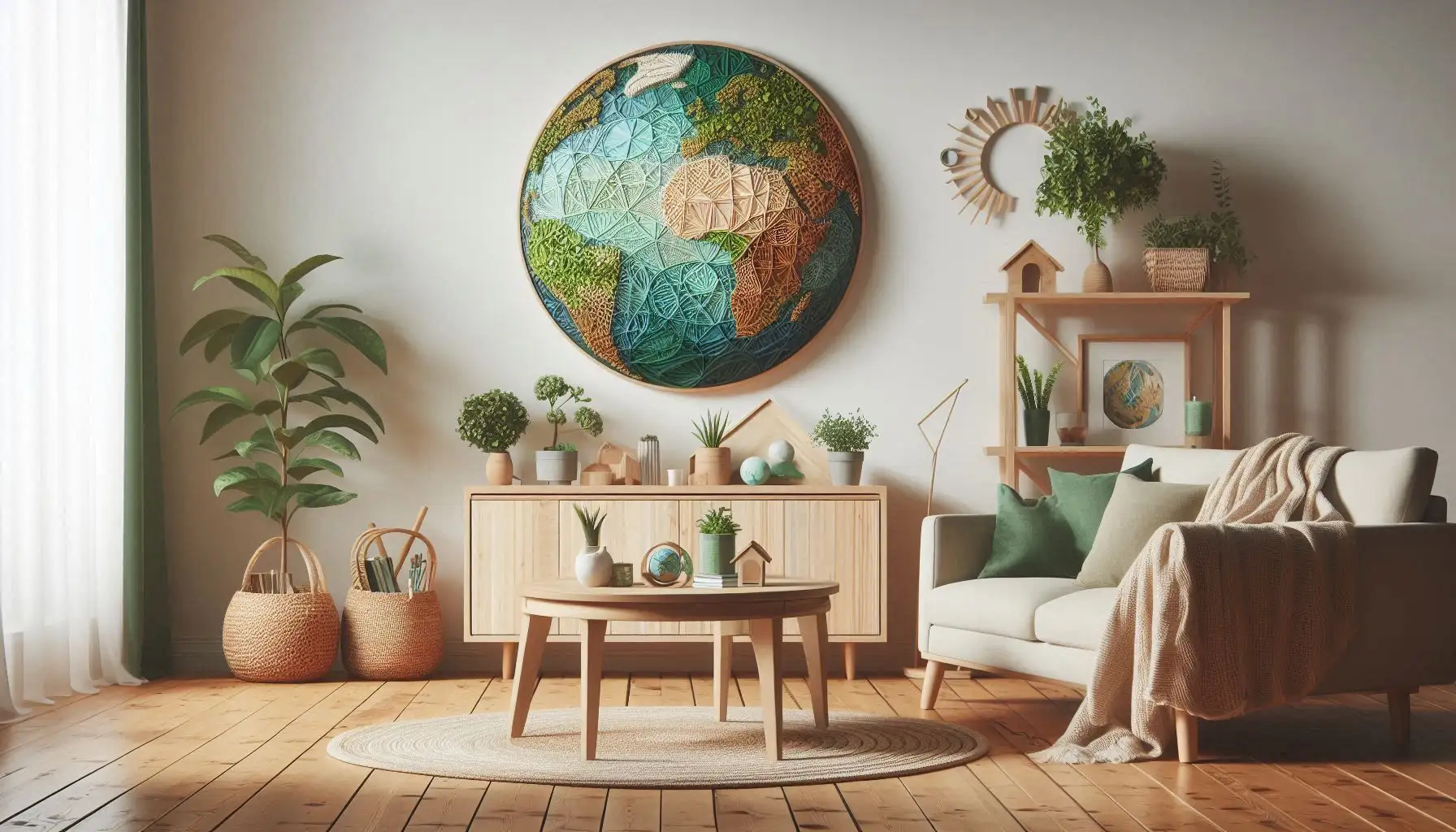Creating a sustainable home is not just about helping the planet—it’s about curating a space that reflects your values while maintaining beauty and functionality. Sustainable decor can add a unique character to your home, blending eco-friendly materials with thoughtful design choices. From eco-conscious furniture to simple tips for reducing your environmental footprint, here’s how you can transform your living space into a greener, more sustainable sanctuary.
1. Choose Sustainable Materials
Opt for Eco-Friendly Furniture
The materials used in furniture are crucial when it comes to sustainability. By opting for eco-friendly options, you can ensure that your furniture has a minimal impact on the environment.
- Reclaimed Wood: Furniture made from reclaimed or salvaged wood offers both sustainability and character. Using wood that would otherwise go to waste reduces deforestation while giving your pieces a unique, one-of-a-kind appeal.
- Bamboo: Bamboo is a fast-growing, renewable resource, making it an excellent choice for furniture, flooring, and even accessories. It’s durable, versatile, and naturally resistant to pests, making it a perfect eco-friendly material.
2. Invest in Quality
Durability Over Trends
When choosing furniture, quality should always be a priority. Opting for well-crafted, durable pieces ensures that your furniture will last for years, minimizing the need for frequent replacements and reducing waste.
- Timeless Designs: Choose classic furniture styles that won’t go out of fashion. Timeless designs tend to be more durable and versatile, reducing the urge to replace items as trends shift.
- Craftsmanship: Support brands and artisans who focus on craftsmanship and sustainability. Quality craftsmanship ensures that your furniture lasts longer, reducing the environmental toll caused by mass production.
3. Explore Vintage and Secondhand Finds
Unique Treasures
Vintage and secondhand furniture are often overlooked but can be a fantastic source of eco-friendly decor. Not only do these pieces have character, but purchasing them also contributes to reducing overall waste.
- One-of-a-Kind Pieces: Vintage furniture often has a unique charm and rich history that mass-produced pieces lack. Incorporating these into your home adds personality and style to your space.
- Reduce Waste: By buying secondhand, you’re not only saving money but also decreasing the demand for new products, thus helping to lower the environmental impact of manufacturing and shipping.
4. Go Green with Fabrics
Eco-Friendly Textiles
The fabrics you choose for your home can have a significant environmental impact. Look for textiles that are natural, biodegradable, and free from harmful chemicals.
- Organic Cotton: Organic cotton is grown without the use of harmful pesticides, making it a much more eco-friendly option than conventional cotton. It’s ideal for bedding, upholstery, and even curtains.
- Linen and Hemp: Linen and hemp are both natural fibers that are biodegradable, durable, and require fewer resources to grow. They make excellent choices for cushions, throws, and window treatments.
5. Incorporate Indoor Plants
Bring Nature Inside
Indoor plants not only enhance the beauty of your home but also provide natural air purification. They help remove toxins from the air while improving the overall ambiance.
- Low-Maintenance Options: For busy homeowners, succulents, snake plants, and pothos are excellent choices. These plants require minimal attention while adding a stylish, green touch to your home.
- Decorative Planters: Opt for eco-friendly planters made from recycled materials, such as glass, metal, or even repurposed items like old cans or containers. This not only supports sustainability but also adds a creative element to your decor.
6. Mindful Accessories
Thoughtful Touches
Accessorizing sustainably doesn’t mean compromising on style. In fact, eco-friendly decor can make your space feel more authentic and meaningful.
- Upcycled Decor: Look for decor items made from recycled materials, like glass or metal. These items add texture and interest to your home without harming the environment. Vintage mirrors, upcycled vases, or repurposed wood furniture can make a statement while reducing waste.
- Handcrafted Goods: Supporting local artisans by purchasing handcrafted items ensures that your accessories are made with care and sustainable practices. These unique, often one-of-a-kind pieces can elevate your home while helping to promote ethical craftsmanship.
7. Energy-Efficient Lighting
Brighten Sustainably
Lighting is an essential part of sustainable decor. By choosing energy-efficient options and maximizing natural light, you can brighten your home without compromising on eco-conscious living.
- LED Bulbs: Switch out traditional incandescent bulbs for energy-efficient LED options. LED bulbs use less energy, last longer, and reduce your overall carbon footprint.
- Natural Light: Maximize natural light by choosing light-colored curtains or blinds that allow sunlight to filter through. Not only will this reduce the need for artificial lighting during the day, but it will also create a brighter, more inviting atmosphere in your home.
Conclusion
Creating a sustainable home is a rewarding endeavor that benefits both you and the planet. By focusing on eco-friendly materials, investing in quality pieces, and exploring vintage finds, you can curate a home that’s both stylish and environmentally conscious. Incorporating green fabrics, indoor plants, and energy-efficient lighting further enhances your home’s sustainability. With these tips, you can transform your living space into a beautiful, functional, and greener environment. Embrace sustainable decor, and enjoy a home that reflects your values while making a positive impact on the world.
Reason
Search
